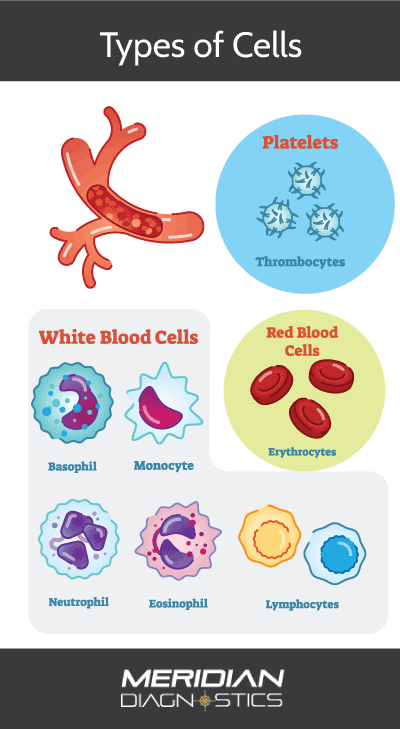Understanding Your Blood Test Results
Blood panels are a common part of physical exams, but to the layperson, they’re almost meaningless in their complexity. With every metric – red blood cell count, cholesterol, iron levels, and so many more – measured completely differently and independently from one another, it’s not easy to know what the random numbers you receive mean. It’s also not always clear why tests are ordered or what they mean for your overall health. When not involved in medicine, it’s common for test results to seem like gibberish, particularly if you receive results electronically via email or app without a sit-down or summary with your doctor.
 While your doctor will likely notify you if there are any major issues you should know about, knowledge is power. Understanding how tests are used can help you look for red flags in your results or identify how to make changes for the better.
While your doctor will likely notify you if there are any major issues you should know about, knowledge is power. Understanding how tests are used can help you look for red flags in your results or identify how to make changes for the better.
Common Blood Tests
Blood tests exist in many forms and functions but most basic blood tests include three separate panels: a complete blood count, a lipid panel, and a metabolic panel.
Complete Blood Count
A complete blood count concentrates on the makeup of the blood, including red blood cells, white blood cells, and platelets, as well as the components within, like hemoglobin. While CBC panels include many different tests, these are the most common and most influential.
- White blood cell count: As the name implies, this screening assesses the number of white blood cells in the blood. A high count can indicate infection, while low counts can indicate a compromised immune system. Screenings also look the proportions of certain forms of white blood cells, including the distribution of neutrophils, lymphocytes, monocytes, eosinophiles, and basophils.
- Red blood cell count: Much like white blood cell counts, this test looks at the number of red blood cells found in the blood.
- Hematocrit test: This test evaluates the portion of the blood made up of red blood cells. It is useful in supporting a diagnosis of conditions like anemia.
- Hemoglobin test: A hemoglobin test evaluates hemoglobin levels. Low levels of hemoglobin can indicate iron deficiency. Doctors can also evaluate the average amount of hemoglobin in each cell via a mean corpuscular hemoglobin test.
- Platelet count and mean platelet volume: A platelet count evaluates platelet levels while a MPV test checks the distribution of platelets in the blood. A high platelet level can mean anemia or cancer, while a low platelet volume indicates a higher risk for heart attack or stroke.
Comprehensive Metabolic Panel
 A metabolic panel is focused primarily on tests that indicate the state of metabolic functioning, including glucose levels and kidney function. The most common components of these panels include:
A metabolic panel is focused primarily on tests that indicate the state of metabolic functioning, including glucose levels and kidney function. The most common components of these panels include:
- Alanine aminotransferase test: An ALT test evaluates levels of the ALT enzyme in the liver, in which high levels can indicate liver disease.
- Albumin test: Albumin is a substance produced by the liver and abnormal levels can be caused by kidney or liver problems.
- Alkaline phosphatase test: Evaluating alkaline phosphatase, an enzyme produced in bone cells and in the liver, this test can indicate bone problems, like rickets, or liver damage.
- Aspartate aminotransferase test: An enzyme found in the blood cells, muscle tissue, the heart, the pancreas, and the kidneys, high levels on this test can indicate cancer, organ damage, or heart disease.
- Calcium test: A test screening for calcium levels, low readings in this test can point to conditions like cancer, tuberculosis, and hyperparathyroidism, while high levels can be indicative of rickets or malnutrition.
- Chloride and creatinine tests: Tests that measure levels of these substances in the blood, both exams are commonly used to evaluate kidney function.
- Fasting blood sugar test: A way to evaluate blood sugar without the effects of food consumption, this test is particularly important in diagnosing diabetes.
- Phosphorus test: By measuring phosphorus, doctors can look for signs of kidney disease, malnutrition, and alcohol abuse.
- Potassium test: Potassium is an important mineral within the body that plays a role in heart and muscle function. This test looks at the levels of potassium within the body and the implications to the muscles if low levels are found.
- Sodium test: A screening that looks at sodium levels, abnormal readings can indicate kidney and liver disorders.
Lipid Panels
Lipid tests are most commonly used to evaluate cholesterol and triglyceride levels, and often are comprised of tests like:
- HDL cholesterol test: HDL cholesterol, or high-density lipoprotein cholesterol, is commonly known as “good” cholesterol. Low levels present in the body can indicate an increased risk of heart disease.
- LDL cholesterol test: LDL cholesterol, or low-density lipoprotein cholesterol, is also known as “bad” cholesterol. High levels of this form of cholesterol can also mean an increased risk of heart disease.
- Total cholesterol test: This test looks at both LDL and HDL cholesterol. When HDL and LDL are looked at proportionately to total cholesterol, it’s easier for doctors to properly assess heart disease risk.
- Triglycerides test: A triglycerides test looks at levels of fats, or triglycerides within the blood. Unusual levels can also be indicative of heart disease risk.
Blood tests can seem overwhelming, but regular screening is an important part of staying healthy. Knowing more about the tests performed and what results can indicate can improve awareness of personal health, helping to guide medical decisions.
